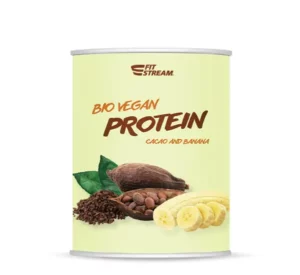What is lactose intolerance?
Lactose intolerance is a digestive disorder in which the body is unable to fully digest lactose, a type of sugar found in milk and other dairy products. It happens when the body doesn't produce enough of the enzyme lactase, which is needed to break down lactose in the small intestine.
When lactose enters the small intestine and is not digested properly, it can cause a range of unpleasant symptoms including bloating, gas, diarrhoea, abdominal pain and nausea. These symptoms can occur at any time from 30 minutes to several hours after consuming dairy products.
How and in whom does this intolerance arise?
Lactose intolerance can be caused by a variety of factors, including genetics, age, but also, for example, gastrointestinal surgery. Its incidence also depends on race. Lactose intolerance is known to be more common in people of African, Asian and Native American descent. In these regions, dairy products probably did not play a significant role in the diet in the past and therefore the body did not need to produce as much of the enzyme, lactase. In contrast, the risk of lactose intolerance is low in populations of northern European descent. However, it is important to realise that lactose intolerance can occur in people of any race or ethnicity and can be influenced by a variety of factors including age, genetics and health status. Therefore, this intolerance can also occur during life after various viral, bacterial diseases . The intolerance can subside naturally over time and, most importantly, the enzyme lactase can still be produced by the body in certain amounts and therefore a person can tolerate small amounts of lactose. Therefore, you need to know what your lactose tolerance is and try it on low lactose foods.
How do we diagnose this intolerance?
Lactose intolerance is usually diagnosed by a combination of medical history (describing symptoms, finding out if intolerance is also present in family members), medical examination (physically observing the patient's bloating), using a lactose intolerance breath test (diagnosing intolerance by determining the concentration of hydrogen in exhaled air resulting from impaired absorption of lactose in the intestine).
Unfortunately, there is currently no cure for lactose intolerance. However, symptoms can often be managed by modifying your diet, such as avoiding or limiting dairy products or taking lactase supplements, which can help the body break down lactose.
Dietary modification in intolerance
It is important to note that completely skipping dairy products can lead to nutritional deficiencies, as dairy products are a major source of calcium, vitamin D and other important nutrients. If you suspect that you are lactose intolerant, it is best to consult a doctor to confirm or rule out intolerance and, once confirmed, to create an individualized plan that meets your nutritional needs while eliminating the symptoms of intolerance.
I have been diagnosed with lactose intolerance, now what?
Read labels carefully: look for products that are labeled "lactose-free". Also pay attention to the list of ingredients and avoid foods that contain lactose, such as milk, cream, cheese and yoghurt.
Feel free to combine also with vegetable alternatives Ideally choose 'fortified' dairy products, i.e. enriched with vitamin D and calcium. There are plenty of non-dairy options available such as soy drink, almond drink, coconut milk and oat drink. You can also find non-dairy cheese, yogurt and ice cream made from alternative sources.
Choose fresh foodA: Fresh fruit and vegetables, meats and cereals are naturally lactose-free. Focus on cooking your own meals, don't rely on processed foods as they can contain hidden sources of lactose in addition to being highly processed.
Plan aheadA: Before you shop, make a plan of what you will cook and a grocery list to make sure you have everything you need for a balanced diet. This will also help you avoid impulse purchases that may contain lactose.
Experiment with new recipesA: There are many delicious recipes that are naturally lactose-free. Look for recipe books or online resources that are dedicated to lactose-free diets. It is important to have as varied a diet as possible every day to include all the protective, building blocks and energy our bodies need.
Consider taking supplementsA: Lactase is an enzyme that can be supplemented. This supplement directly contains the enzyme needed to break down lactose. I recommend, first of all, to adjust your diet in favor of lactose-free products. But if you ever go out to lunch where there is lactose, this supplement will help save you from indigestion. Overall, with a little planning and awareness, it is possible to shop for a balanced diet and avoid lactose-containing foods.
Watch out also for medicinesas lactose may be present in their composition. Also, be careful with dietary supplementsthese may also contain it.
Fermented dairy products and lactose: People who still have a certain amount of the enzyme lactase produced in the body can tolerate fermented dairy products such as kefir, acidco, yoghurt, but also cheeses such as Parmesan, which naturally have a minimal amount of lactose.
If you are looking for a suitable lactose-free food supplement, try for example our BIO Vegan Protein. A 100% organic product that has a great composition and taste.






